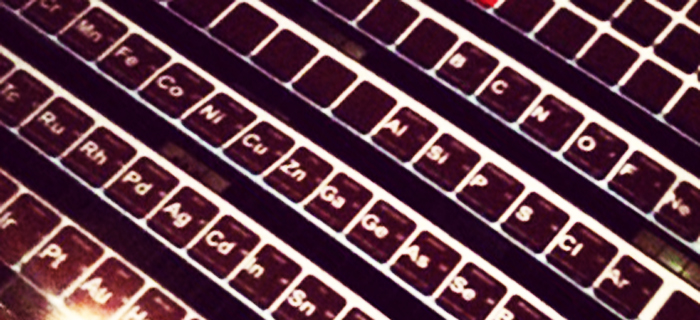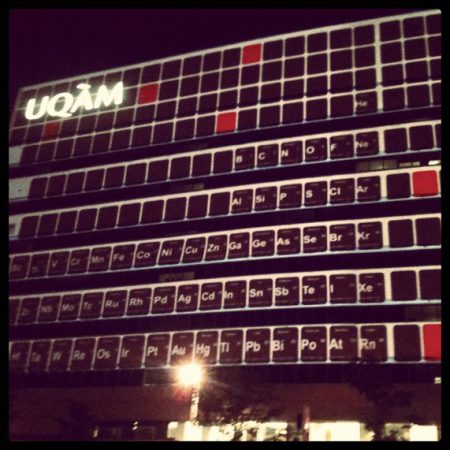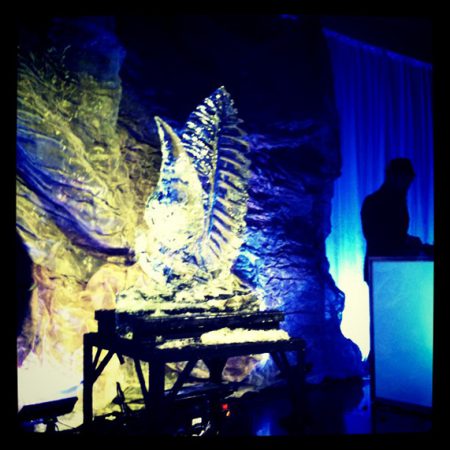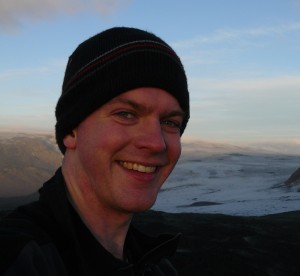
Memories of Montréal
The 2012 Goldschmidt conference took place between the 24th and 29th June in Montréal, Quebec. Conferences are interesting beasts for all involved. For the new PhD students, this may be the first time to present their work in public, which brings a whole raft of stress-related baggage. For intermediates such as late-stage PhD students and Post-Docs, the stress is more due to imminent cessations of funding. The stress for Professors and other advanced academics is due to trying to synthesize the work of a research group into a ground-breaking presentation without taking the glory away from individual students. This hot pot of stress-inducing factors often means that the week prior to a conference is a busy time. Abstracts are written long before the presentation, which means that often a degree of clairvoyance is needed to second-guess how the results will pan out in the meantime. If someone has ever successfully done this, I don’t know about it! Machines are run into the night to get the last bit of data, printers are overwhelmed by poster printing at the last possible moment, and supervisors are swamped with 11th hour information from students.

It is with some relief then, when we all convene for the Ice-breaker that marks the start of the conference. Montréal is fantastic. It was my first time to Canada, so I had no preconceptions about the city. It seems to be a mix of North American and French culture, with a healthy dose of other influences such as Portuguese, Haitian, British and Italian. The result is a wonderful blend of relaxed living, multilingual communities, and a vibrant night life. Having spent time in France, I loved being able to use my second language at will and enjoy the stellar cuisine, yet still be able to buy something on a Sunday. The Palais de Congres is an ideal place for a conference, with many rooms available, all large enough to accommodate a big crowd if an interesting speaker was on. So the stage was set for a memorable conference. Goldschmidt 2012 did not disappoint.
Personally speaking, I find that Goldschmidt as an ideal size for an international conference. It is small enough to allow good and sustained interactions between scientists in each field, unlike the gargantuan AGU fall conference where the sheer size of participants means that discussions are limited to when the oral and poster sessions are scheduled. Equally, it is large enough to allow delegates to explore sessions outside their expertise, either for interest or for ideas on new avenues or collaborations. This year, my personal example of this was the Theme 6, “Subduction, the Mantle Wedge and Arc Volcanism: Early to Present-day Earth.” Close enough to my field of expertise for me to understand the talks, but sufficiently different for me to be enthused by new and exciting findings that I had not come across in the literature.

Done correctly, conferences are inspiring experiences. All scientists know that for a considerable amount of our time, self-motivation is all that keeps our work ticking over. Geo-apathy has been known to strike even the most studious of people, be it because the ICP machine has refused to work, the computer model won’t run because of a rogue comma on a command line, or personal circumstances that life seems to throw our way at most inopportune times. A conference is the ideal medication for Geo-apathy. There are old friends to catch up with, the realisation that your work is of interest to more people than just your supervisor, the two or three talks you see during the week that send your brain into a fizz of ideas of how you could further your own scientific exploration, the talks with prospective employers that reassure you that all this work is not for nothing, and the memorable nights out with peers that remind you why we are so privileged and lucky to work in such a friendly and open scientific community. Often it is these nights out that prove most scientifically fruitful. I owe at least one post-doctoral position and two scientific papers to random conversations in a bar. Goldschmidt this year was no exception, and was particularly interesting for us Europeans to be exposed to a more North American weighted conference. There were several new friends/colleagues made throughout the week.
In summary, the conference was a resounding success. The general mood on Friday afternoon was that of happiness and exhaustion, the latter is understandable as an event such as this provides a perfect alternative metaphor for “burning the candle at both ends.” However, none of this exhaustion seemed to be Geo-apathy related. Geo-saturated perhaps, but that affliction doesn’t last long. Goldschmidt reminds me why I love science. We are lucky to have such a vibrant, studious, complementary, and cutting edge group of scientists around us. I feel privileged and inspired by the conversations I have had this week and hope the other delegates feel the same. Conferences primarily allow us to disseminate our data and results, but in reality they provide so much more than that. Long may it continue, so I hope see old and new friends alike in Florence in 2013.
About the author

Morgan Jones is a post-doctoral researcher in the Institute of Earth Science at the University of Iceland in Reykjavik. His research focuses on the importance of volcanic terrains on the chemistry of the oceans, specifically the interaction of particulates transported by rivers or as volcanic ash on the availability of nutrients in coastal and surface waters. The goal is to quantify element release rates in the field and laboratory, in order to constrain the magnitudes of key chemical and biological processes such as the carbon cycle. This work is done in collaboration with Sigurður Gislason in Iceland but also Catherine Jeandel and Eric Oelkers at the Observatoire Midi-Pyrénées in Toulouse, France. Morgan is supported by a Marie Curie Intra-European Fellowship (FP7-PEOPLE-2009-IEF-254495).
